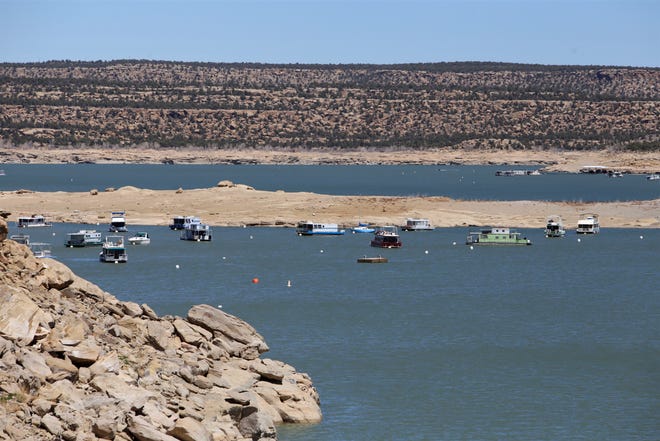Dry soil, below average high elevation snowpack means spring peak release may not occur

FARMINGTON — Despite the wet winter, the U.S. Bureau of Reclamation may not have a spring peak release from Navajo Dam this year.
Susan Behery, a hydraulic engineer for the Bureau of Reclamation, told people who attended the operations meeting on Jan. 21 that there is a 30% chance the spring peak release will happen. She said the bureau will know for sure by the time it has its next operations meeting in April.
This is because it is predicting below average flows into Navajo Lake due to dry soil conditions and a below average high-elevation snowpack.
The high-elevation snowpack is currently below average because there were not a lot of storms in October and November. These October and November storms generally build up the snowpack above 11,000 feet.
The snowpack below 11,000 feet is currently above average thanks to recent storms, but it is unclear if that trend will continue.
Behery said if there is not a spring peak release there won’t be any large release from the reservoir. Last year the bureau did a maintenance release to clear sediment out of the channel. Behery said the lack of a monsoon season meant the sediment did not resettle in the San Juan River.

One of the major contributors to sediment in the San Juan River is Largo Wash, which often runs high during monsoon storms.
The spring peak release has two purposes: removing sediment from the channel and mimicking natural conditions for endangered fish like the Colorado pikeminnow.
The late winter and spring moisture of 2019 meant no new pikeminnows were released into the San Juan River last year because the fish were reproducing naturally.
More:'Salmon of the southwest' shows signs of recovery
Several people from Bloomfield Irrigation District expressed concerns about the spring peak releases, which require BID to build a berm. This can cost thousands of dollars. The berm must be built while the flows are less than 800 cubic feet per second. But it also reduces how much water can get into the ditch. If the ramp up to 5,000 cubic feet per second is not fast enough — for instance, if it lingers at 1,000 cubic feet per second for several days — BID may struggle to provide water through its ditch.
BID board member Leonard Trujillo was also concerned about erosion caused by the releases. He said he loses private riverfront property every time the bureau releases 5,000 cubic feet of water per second.
Hannah Grover covers government for The Daily Times. She can be reached at 505-564-4652 or via email at hgrover@daily-times.com.
Support local journalism with a digital subscription: http://bit.ly/2I6TU0e